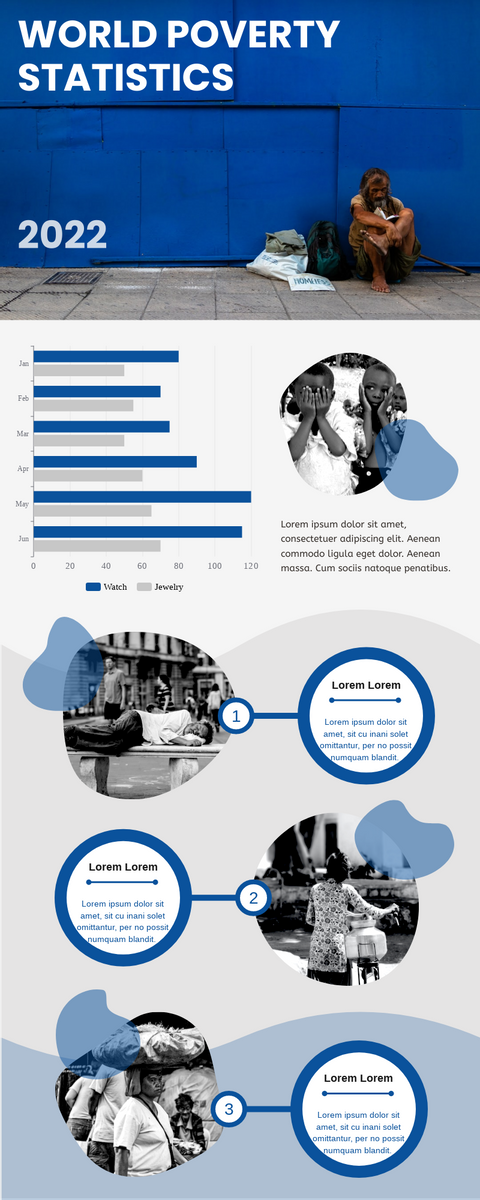World Poverty Statistics Infographic
Using Visual Paradigm Online’s online infographic maker, businesses and organizations can create high-quality infographics like this one with ease. The platform offers an intuitive drag-and-drop interface, pre-built templates, and thousands of customizable elements, ensuring that anyone can create a professional-looking infographic, regardless of their design experience. Additionally, the tool is cloud-based, making it accessible from anywhere, at any time.
What makes Visual Paradigm Online’s online infographic tool stand out is its vast graphic design template library. Users can choose from a variety of templates tailored to different topics, including business, technology, and education. Each template is fully customizable, allowing users to add their own text, images, and branding elements to make the design their own. With the vast library of templates and elements, users can create an infographic that perfectly fits their needs, making it an ideal choice for businesses and organizations looking to create a custom design quickly.
In conclusion, Visual Paradigm Online’s online infographic maker is an excellent choice for businesses and organizations looking to create high-quality, customizable infographics. With its intuitive interface, vast library of templates, and customizable elements, anyone can create a stunning design in no time. To learn more about Visual Paradigm Online’s graphic design editor, visit https://online.visual-paradigm.com/infoart/. For access to the graphic design template library, visit https://online.visual-paradigm.com/infoart/templates/.
What is poverty?
Poverty is a state of being where a person or a community lacks sufficient resources to meet their basic needs for food, shelter, clothing, healthcare, education, and other essential goods and services. It is a multidimensional concept that encompasses not only income but also access to education, healthcare, sanitation, and other social services, as well as social exclusion and vulnerability to various forms of exploitation and abuse.
Poverty is often measured in terms of income or consumption, with individuals or households falling below a certain threshold considered to be living in poverty. However, poverty can also be understood in broader terms, including social, economic, and political exclusion, lack of opportunities, and limited access to resources and services.
Poverty can have significant negative impacts on individuals, families, and communities, including poor health outcomes, reduced educational opportunities, and limited social mobility. Addressing poverty requires a comprehensive approach that addresses its multidimensional nature and involves a range of stakeholders, including government, civil society, and the private sector.


